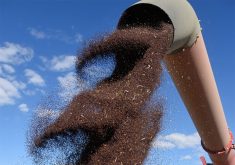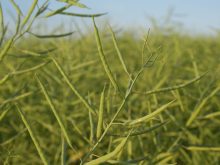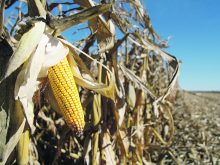A large soybean crop in the United States and sluggish exports have not allowed the canola market to make a move
SASKATOON — The soybean market is wrestling with a couple of bearish factors that are preventing the oilseed from rallying, says an analyst, and that is weighing down a canola market desperately attempting to gain some traction as of the end of August.
The U.S. Department of Agriculture forecast a record 124.9 million tonnes of U.S. soybean production in its latest (August 2024) World Agricultural Supply and Demand Estimates report.
Related stories:
However, analysts think it could be even larger than that.
Read Also

VIDEO: Ag in Motion documentary launches second season
The second season of the the Western Producer’s documentary series about Ag in Motion launched Oct. 8.
Pro Farmer recently released its yield and production forecasts following its annual crop tour.
It is predicting an average national soybean yield of 54.9 bushels per acre, which is above the USDA’s estimate of 53.2 bu.
Pro Farmer’s total U.S. production number is 129 million tonnes, more than four million tonnes higher than what the USDA is predicting.
That is at odds with DTN, which also took a stab at the numbers in its Digital Yield Tour. Its tour uses satellite imagery and data science to model yields.
DTN estimates that yields are well below the USDA’s numbers in most of the major soybean-growing states.
For instance, in Illinois DTN is forecasting an average yield of 61.5 bu. per acre, versus the USDA’s 66.
Rich Nelson, chief strategist with Allendale Inc., said the trade appears to be siding more with Pro Farmer.
“The trade has a high confidence that there will be another yield increase ahead,” he said.
It thinks the yield number will fall somewhere in the middle of the Pro Farmer and USDA guesses, at around 54 bu. per acre.
Nelson said it’s hard for soybeans to rally with such a massive U.S. crop looming, especially when it keeps getting bigger.
The other major problem is the sluggish export sales to start the season.
A few weeks ago, sales were running 77 per cent below the five-year average, but that situation has improved of late and now they’re about 30 percent below.
“We have made some progress,” he said.
However, that’s still not a great start, considering that the USDA’s goal was only a five percent drop for the year.
Demand out of China has been weaker than anticipated due to a smaller hog herd in that country.
China’s sow herd shrunk 12.2 per cent between its peak in June 2021 and June 2024, according to the Dim Sums blog.
Nelson said the other problem is that Brazilian soybeans are selling at a slight discount to U.S. soybeans at a time when it should be the other way around.
He noted that the USDA ended up dropping its initial U.S. soybean export estimate by between 125 and 175 million bushels in each of the last couple of years.
A few weeks ago, it was looking like another 100 million bu. drop was looming, but now it might be closer to a 25 to 50 million bu. correction, said Nelson.
Arlan Suderman, chief commodities economist with StoneX, believes the situation is even uglier than that.
“We’re still way behind,” he said during the recent Channel Final Bell podcast.
“I would say about 450 million bushels behind where we need to be for the start of the new marketing year.”
China has been buying cheaper old crop Brazilian soybeans instead of U.S. beans. However, Brazilian farmers have stopped selling at today’s prices, so sales of U.S. soybeans should start to pick up.
Nelson said the good news is that interest rates are set to drop in the U.S., which will put pressure on the U.S. dollar, making it more competitive with the Brazilian real.
“(Exports) will improve, but I don’t know if we’re going to be having a bull story at this point in time,” he said.
The other big wild card in the soybean market is what will happen with South America’s planting.
He thinks Brazil’s acres will increase, but not by the same three to five per cent annual growth rate the country has been experiencing since 2007 due to lacklustre prices and dryness in the south of the country.
Suderman said Brazilian farmers are waiting for the monsoon rains, which look like they’re going to be late again this year.
Weather models show them arriving in late September or early October compared to the more typical mid-September arrival.
“Does that mean a crop failure? No,” he said.
Central-west Brazil received half its normal rainfall last year but still managed to produce a decent crop.
Suderman has heard farmers in Argentina will cut back on their corn acres by 17 to 30 per cent and plant more soybeans, which is another bearish factor for the market.
Nelson has also heard that Argentina’s acres will be up substantially, but he believes that will be offset by the yield losses anticipated from a La Nina weather event.


















